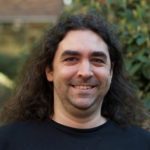Proc. SPIE 8586, Optogenetics: Optical Methods for Cellular Control, 85860U (8 March 2013); doi: 10.1117/12.2010408;
The ability to control the illumination and imaging paths of optical microscopes is an essential part of advanced fluorescence microscopy, and a powerful tool for optogenetics. In order to maximize the visualization and the image quality of the objects under observation we use programmable, fast Micro Mirror Arrays (MMAs) as high-resolution Spatial Light Modulators (SLMs). Using two 256×256 MMAs in a mirror-based illumination setup allows for fast angular-spatial control at a wide range of wavelengths (300-1000nm). Additionally, the illumination intensity can be controlled at 10-bit resolution. The setup allows selective illumination of subcellular regions of interest enabling the precise, localized activation of fluorescent probes and the activation and deactivation of subcellular and cellular signaling cascades using photo-activated ion-channels. Furthermore, inasmuch as phototoxicity is dependent on the rate of photo illumination we show that our system, which provides fast, compartmentalized illumination is minimally phototoxic.



